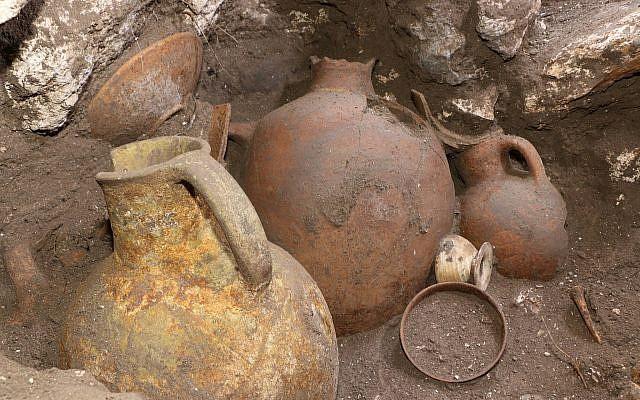
Archaeological Observations Of Early Bronze Age In Southern Levant
On the west, there is a fertile and coastal zone, while to the east, there are fertile but also semi-arid and arid zones ranging between ca 400 metres below sea level and 1100 metres above sea level.
In terms of archaeological perceptions of the Early Bronze (EB) Age, the area under discussion may be divided into three major regions: northern, central and southern. These distinctions are primarily based on broadly shared ceramic traditions related to specific horizons within the Early Bronze Age, said the American archaeologist Eliot Braun, adding that borders between these regions were fluid and people were constantly migrating from one area to another.
"Traditionally EB 1 has been divided into two distinct phases or periods, one early [EB IA or EB Ia]; the other later [EB IB or EB Ib]," Braun said, adding that although nowhere in the literature has anyone offered precise parameters for these sub-periods.
Furthermore, in some earlier literature, there is even a third (EB IC or EB Ic) period, while some scholars suggested divisions into ceramic-based, vaguely chronological units known as“Proto-Urban A-C”.
These periods date between ca 3,800 – 3, 500 BC and 3,500 – 3,000 BC.
"This latter period includes several vaguely definable, developmental phases, to the beginning of EB 2," Braun said, adding that certain additional factors such as climate, topography, availability of building materials and possibly time and other constraints on human activity were“non-negotiable” or barely negotiable factors. S
Talking about styles of houses, Braun said that some of these, especially climate and the economic bases of societies also impinged upon decisions of what types of domiciles were best suited to fill the needs of populations.
"In particular, these last factors account for a dichotomy between construction in well-watered, fertile zones, and that found in semi-arid and arid regions. In the former instance agriculture and animal husbandry could be practiced within limited locales, while in the latter, the search for pasture and water was based on seasonal resources and could therefore involve or even necessitate mobility over considerable distances," Braun explained. While one type of lifestyle favoured permanent, solidly-constructed domiciles, others required more temporary types of constructions that could easily be erected with materials transported to a site and/or constructed with what was available locally.
"This is clear, with some notable exceptions, from occupation debris recovered in the archaeological record of the southern Levant in semi-arid and arid zones," Braun underlined, adding that the most fertile zones in the region that benefitted from considerable rainfall are primarily on the west, in northern segments of the Great Rift Valley, its immediate highland environs and the coastal plain.
"In addition, there are some other select locales where precipitation was relatively plentiful and where other water sources were abundant. Those areas were associated with agricultural/agro-pastoral communities of sedentarists whose structures were intended for permanent habitation over long periods of time," Braun noted, adding that architectural remains in those regions are often preserved as foundations of two or more parallel lines of closely placed stones, which offer relatively stable erosion-resistant platforms for superstructures.
Some buildings even had superstructures of stone while others seem to have integrated both stone and mud brick. "At some sites, where stones were not readily available, mud brick foundations are known. They tend to show significant rebuilding and re-use of structural elements, which, when excavated indicate very complicated layering, in patterns sometimes known as 'spiral stratigraphy'," Braun emphasised, noting that other features not uncommon in EB houses, especially in the later phases, are floors at the levels of bases of foundations, flat stone pillar bases, mud brick pillars, internal benches, semi-subterranean floors with steps leading down to them and stone door sockets.
"In semi-arid and arid zones, where semi-sedentary populations existed, structures tended to be more 'flimsy' and many examples of foundations are composed of single lines of stones placed at reasonably, but not very close, which were clearly not suited for mud brick superstructures," the scholar underlined.

Legal Disclaimer:
MENAFN provides the
information “as is” without warranty of any kind. We do not accept
any responsibility or liability for the accuracy, content, images,
videos, licenses, completeness, legality, or reliability of the information
contained in this article. If you have any complaints or copyright
issues related to this article, kindly contact the provider above.


















Comments
No comment